Mountain air was crisp and piercing, despite the midday sun shining bright above us. As I checked out the vast valley before me, I felt the sharpness of each breath I drew, a constant reminder of the extreme environment we were there to study. I was in Shodug, Bhutan, in the headwaters of Thim Chhu, a river that flows through Thimphu valley, Bhutan’s capital city. I coordinated a team of researchers from Bhutan’s National Centre for Hydrology and Meteorology (NCHM) on a mission to install ground temperature sensors in areas of possible permafrost occurrence in the Bhutan Himalayas.
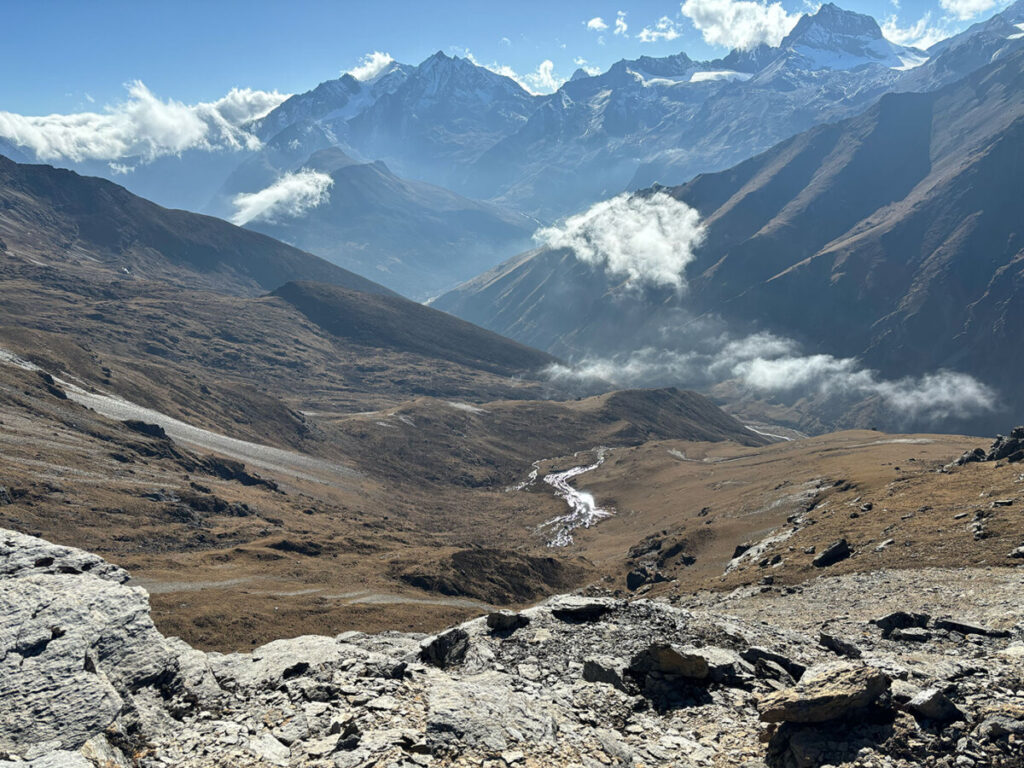
This was Bhutan’s first initiative to monitor permafrost, an important milestone for both the International Centre for Integrated Mountain Development (ICIMOD) and NCHM. It also happened to be our first day of installing sensors, naturally, enthusiasm was running high. But as we moved forward, it quickly became clear that the rugged terrain was more challenging than expected. Navigating unstable, unfamiliar ground without proper trails was painfully slow, and at the rate we were progressing, it would take us days longer than planned to deploy all the sensors.
That is when we met Kinzang Wangchuk, a local yak herder who owns over eighty yaks and also someone who was everything we were not in this environment: confident, swift, and deeply in tune with the land. When we asked if he could guide us, he agreed with a smile that seemed almost effortless. Over the following days, I was amazed by how well he knew the terrain. It was as if every rock and ridge held a story he had heard a hundred times. We simply pointed to where we needed to go, and Kinzang would lead the way, moving through the treacherous terrain with the ease of someone walking on flat ground.
We identified a potential site with a high probability of permafrost occurrence and asked Kinzang to take us there. Without hesitation, he nodded and said, ‘Ah, that’s where we collect cordyceps.’ I did not think much back then, but the next site we identified as having a high probability of permafrost also happened to be an area Kinzang frequented. As I pointed out the general direction, Kinzang’s eyes lit up, ‘I know that place. That is another spot where we gather cordyceps.’ Second time! Could this be just a coincidence? A likely connection between the two highland occurrences of cordyceps collection and high-probability permafrost areas piqued my curiosity.
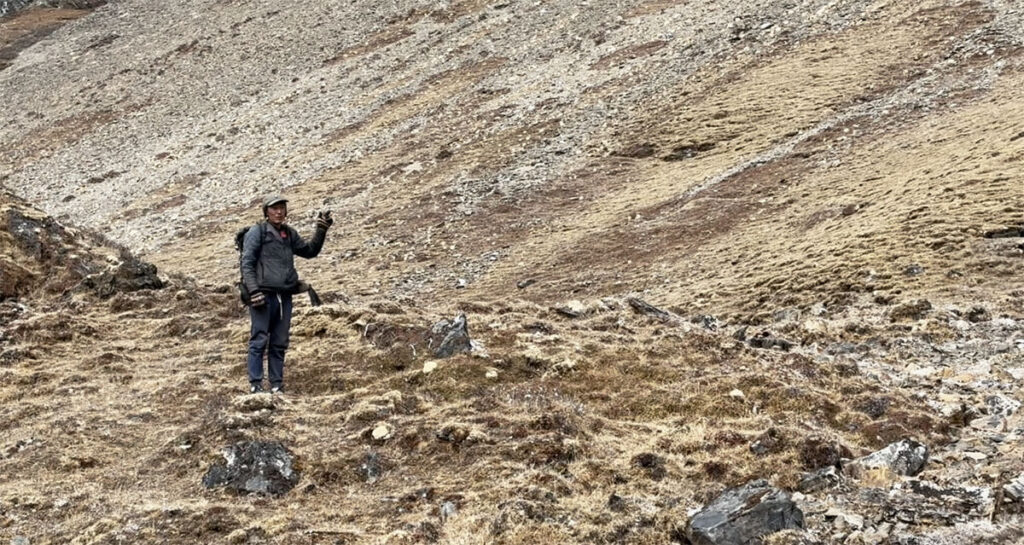
Cordyceps sinensis (Ophiocordyceps), a caterpillar fungus locally known as Yartsa Gunbu (summer grass winter worm), is generally found across the Himalayan range. Given its high medicinal value, Yartsa Gunbu is often referred to as ‘Himalayan gold’ and is highly sought after in the market.
Permafrost is the soil, rock, or sediment, usually held together by ice, that stays frozen for at least two consecutive years. It can be found in high-latitude and high-elevation regions, mostly 4,500 metres above sea level in the high mountains in the case of the Hindu Kush Himalya (HKH) region. The health of permafrost is critical for mountain ecosystems, but it is also the least studied component of the cryosphere, especially in the HKH region.
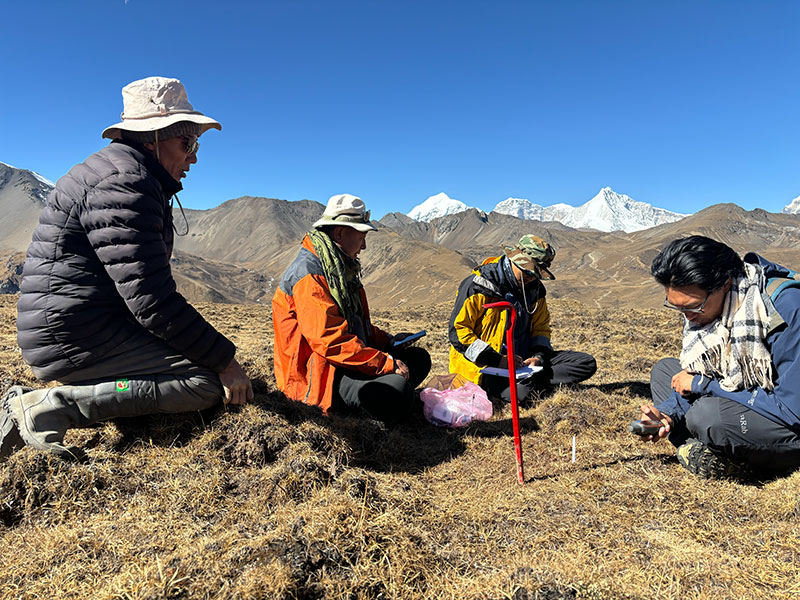
Could it be that Cordyceps sinensis favours colder, permafrost-rich environments? The question persistently swirled in my mind. To test my theory, I pointed to another area with medium to high permafrost probability. ‘I bet we will find cordyceps there too,’ I said, half-joking. Kinzang confirmed with a grin, ‘Yes, we do.’
That only deepened my curiosity, I felt like I had landed on a gold mine of information. I prodded further, taking the reverse approach. I picked a spot far away from likely to find permafrost. Pointing at it, I asked sarcastically, ‘How about there? Lots of cordyceps, I am sure.’ Kinzang shook his head with certainty. ‘No cordyceps there.’ This pattern set my mind buzzing with questions.
Walking forward, jokingly, I said, ‘If you want to collect a lot of cordyceps next season, let me know. I can pinpoint exactly where to look!’ Of course, this was a hyperbole; Kinzang knew this landscape better than anyone. But he dropped his final surprise, ‘Cordyceps are not abundant every year. It is only abundant every three to four years.’ Kinzang further pointed me towards something intriguing – the cyclical abundance of cordyceps.
This was too much of a coincidence to leave at that, it deserves more research. From the literatures I reviewed, I found that while cordyceps thrive in cold environments, there is no specific mention of permafrost influencing their distribution. Surprisingly, the literature also revealed that ghost moth larvae, which cordyceps parasitise, take three to five years to mature in the soil, their development and maturity are closely tied to soil temperature.
It is still early to establish the temperature of the ground as the likely connection to the habitat, development, and maturity of Cordyceps. however, this theory needs to be assessed in other permafrost regions in the HKH as well. Now, I am curious to explore this phenomenon further based on:
- Likelihood of cordyceps presence in permafrost environments.
- Linkages between the abundance of cordyceps every three to five years to the time it takes for ghost moth larvae to mature in cold soil.
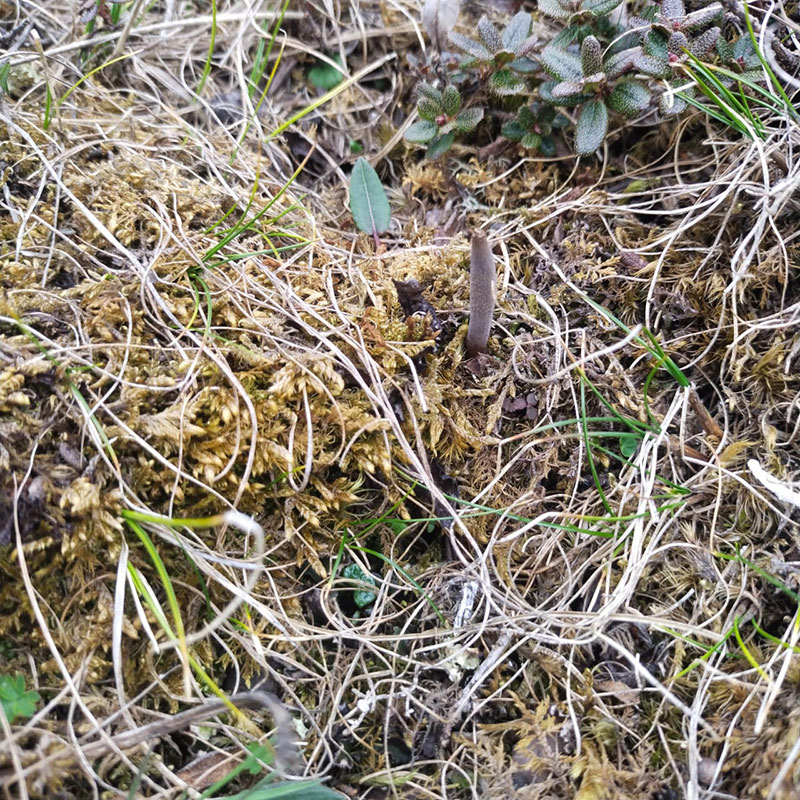
Permafrost in the region remains largely under-researched, although through what we know, its changes can have the most implications for the mountain communities. My conversation with Kinzang Wangchuk and potentially the newfound understanding and linkages between cordyceps and permafrost raised a bigger question in my mind – could thawing mountain permafrost disrupt this delicate relationship between cordyceps and their habitat? For mountain communities like Kinzang’s, whose livelihoods depend on harvesting cordyceps, the impacts could be profound. This likely connection between permafrost and cordyceps calls for more research to better understand the phenomenon and to prepare for potential changes in a warming world.
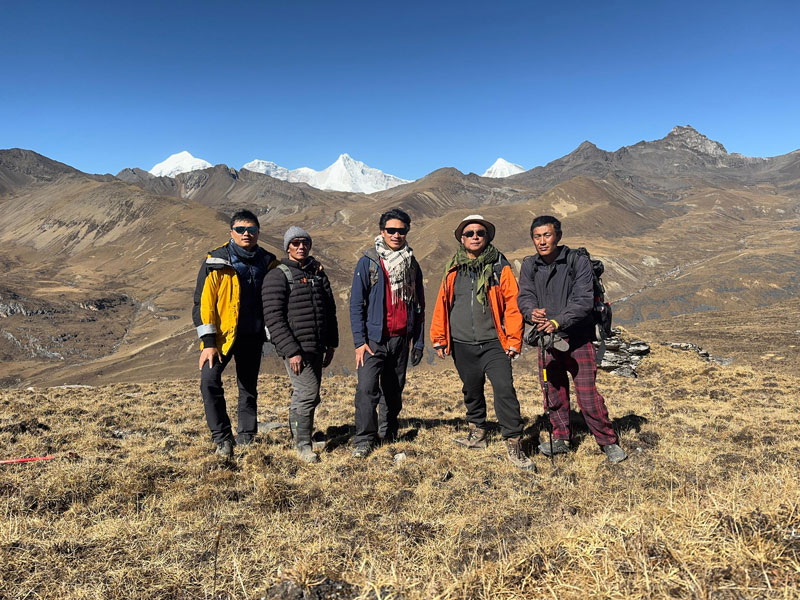
Additionally, through my coincidental encounter with Kinzang Wangchuk, I have developed a profound respect for the role of Indigenous knowledge in the scientific process. It has reinforced how local knowledge and empirical science can complement each other, providing deeper insights into complex environmental systems. Through the integration of the two valid sources of knowledge, we can uncover new research questions and enhance our understanding of intricate ecological connections. This will not only enrich scientific questions but also pave the way for more informed and context-specific decision-making, one that is data-driven and deeply rooted in lived experiences.
What started as a challenging expedition became an enlightening journey, blending traditional knowledge and scientific curiosity to uncover nature’s hidden links.



